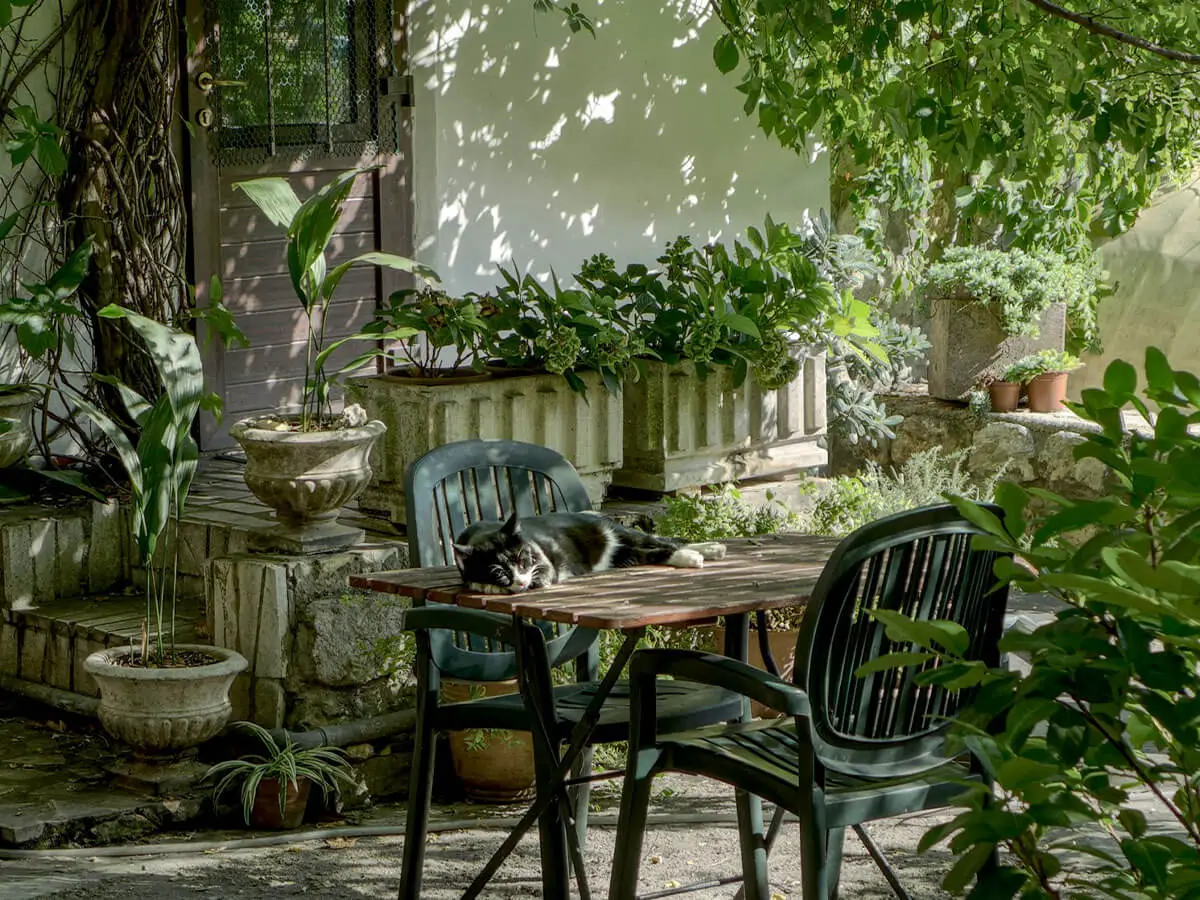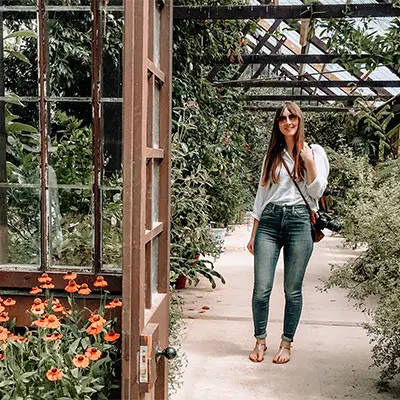14 Shade Garden Design Ideas for Small Spaces
February, 2024 |Shade is a common characteristic in small gardens. Enclosed by fences, walls, or trees it can have a big influence on how you design your space.
While shade can bring up challenges when designing a small garden, it definitely doesn’t have to be a disadvantage… In one sense it can make plant choices easier and your styles more creative, as you have set conditions to work with.
There are even some extremely popular small garden style designs perfectly suited to shady spaces. Like tropical or woodland garden styles.
Design ideas for shady gardens
Use these shady garden design tips to enhance your space and turn your small garden into a thriving oasis.
1. Choosing the right plants
While choosing plants, don’t forget to check their growing habits and requirements. Make sure your shady garden provides the right conditions or make some adjustments to your soil to help your plants thrive. Lots of shade loving plants also prefer moist conditions so you may need to adjust your soil if it drains too quickly.
To make sure your shady garden looks lush and full year-round, choose a mix of annuals, perennials, and evergreens.

2. Use different types of foliage
There’s an incredible variety of foliage amongst shade loving plants. Add interest and depth with a mix of leaf shapes, sizes, and textures. From large, architectural paper plant leaves to intricate fern fronds.

3. Add lighting
If you miss out on sunsets, using solar lights can add brightness and warmth to your space in the late afternoon and evenings. Add stake lights along a pathway or hang fairy lights in an arbor or tree.
Make sure to choose warm colors or warm white bulbs to give the space a more inviting ambiance.

4. Bring in plants with bright colors
The foliage of shade loving plants isn’t always green… From the intense neon pink of coleus leaves to the rainbow shades of coral bells, there’s always plenty of colorful foliage to brighten up a shady garden design.
If you’d prefer to keep things more subtle, using plants with golden green hues can bring additional warmth into a shady space.
For flowers, look to shade loving plants like begonias and impatiens.

5. Use vertical planters
When creating a shady garden design, don’t forget to use height. Using a vertical planter to position plants higher up is a great way to maximize planting areas that receive sunlight.
6. Create a shade tolerant veg garden
While watermelons and tomatoes may not thrive, there’s still a good selection of shade tolerant vegetables and herbs to choose from. Mustard greens, lettuce, mint, beets, and spinach are all tolerant of shady garden conditions.

7. Hardscaping
Pathways, different levels, patios, and other structures can all bring further texture and shape into a garden space to add interest and depth. If you’re designing your small garden on a budget, simply adding curved borders can amplify the design.

8. Use climbing plants
Climbing plants can capture sunlight from up high and add flowers and vibrancy along a fence or trellis. Clematis plants thrive when their roots are in shade and the vine is in sunlight.

9. Add interest with art
Garden sculptures and decor can add interest to shady gardens. They provide a focal point to draw the eye in place of showy sun-loving blooms like dahlias or sunflowers. Be bold and choose one creative item to draw the eye and add intrigue.
10. Committed to a lawn?
It can be a struggle to maintain lush turf in shady spots. Instead, embrace a well-designed patio or area of gravel surrounded by lush borders. If you want a more natural look, consider creeping, ground-cover plants like mosses or ivy.
11. Add a water feature
The sound of water can add an idyllic element to a small garden space. A mini fountain or water feature can become an accent feature in a shaded garden space.

12. Fill the space
Use smaller shade-loving edging plants like coral bells or ajuga to fill gaps in borders or walls and create full planting arrangements. Dense plantings will make a small shady garden look lush and healthy.
13. Add colorful features
Color still plays a vital role in shady garden design. Adding brightly colored features such as planters, paving stones, furniture, rugs, and other garden design features can add visual impact and contrast.
You might paint a wall or fence a warm, terracotta red to add warmth, or even white to brighten the space.

14. Go tropical
Tropical plants are perfect for shady gardens as many varieties are used to thriving underneath shady forest canopies. Tropical shade-loving plants can be found in an incredible mix of colors, sizes, and styles, so you can easily create your own tropical oasis.






